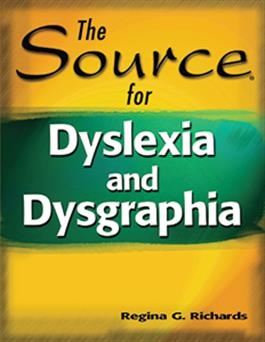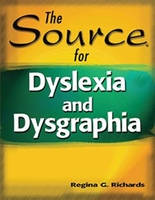The Source for Dyslexia and Dysgraphia

Materials to Download
To see more of this product's contents:
The Source for Dyslexia and Dysgraphia
Ages: 5-Adult
Grades: K-Adult
Get comprehensive information on identifying, understanding, and diagnosing students with dyslexia and dysgraphia along with hands-on strategies and techniques for intervention.
The author begins by dispelling 16 myths about dyslexia and setting a goal of helping the reader understand the struggles experienced by students with dyslexia and dysgraphia. Then discusses:
- the processing styles inherent in dyslexia and dysgraphia
- how to identify at-risk students
- components relevant to diagnosing dyslexia
- when to compensate and when to remediate
- the importance of phonological awareness skills and how to develop them at early and advanced levels
- approaches to develop sound/symbol correspondence for reading and spelling
- why students with dyslexia need instruction in phonics
- how to develop written language skills using remedial and bypass strategies
- how to improve written language expresssion through metacognitive awareness and explicit practice of specific processing skills
Activities are included to build these skills:
- phonological awareness beginning with easy rhyming and alliteration tasks and ending with advanced tasks such as creating malapropisms and reduplication games
- sound/symbol correspondence following a mnemonic teaching system called Memory Foundations for Reading (MFR)
- decoding and encoding through structured, systematic, and multisensory instruction and practice
- spelling based on Levine's six acquired insights and including activities designed to enhance learning at each insight
- manuscript and cursive writing
- prewriting skills such as comprehension, rehearsal, and organization
- written expression subskills such as as drafting, proofreading, and editing
308 pages • 8.5 x 11, softcover book with reproducible pages (checklists, therapy activities) • ©1999


